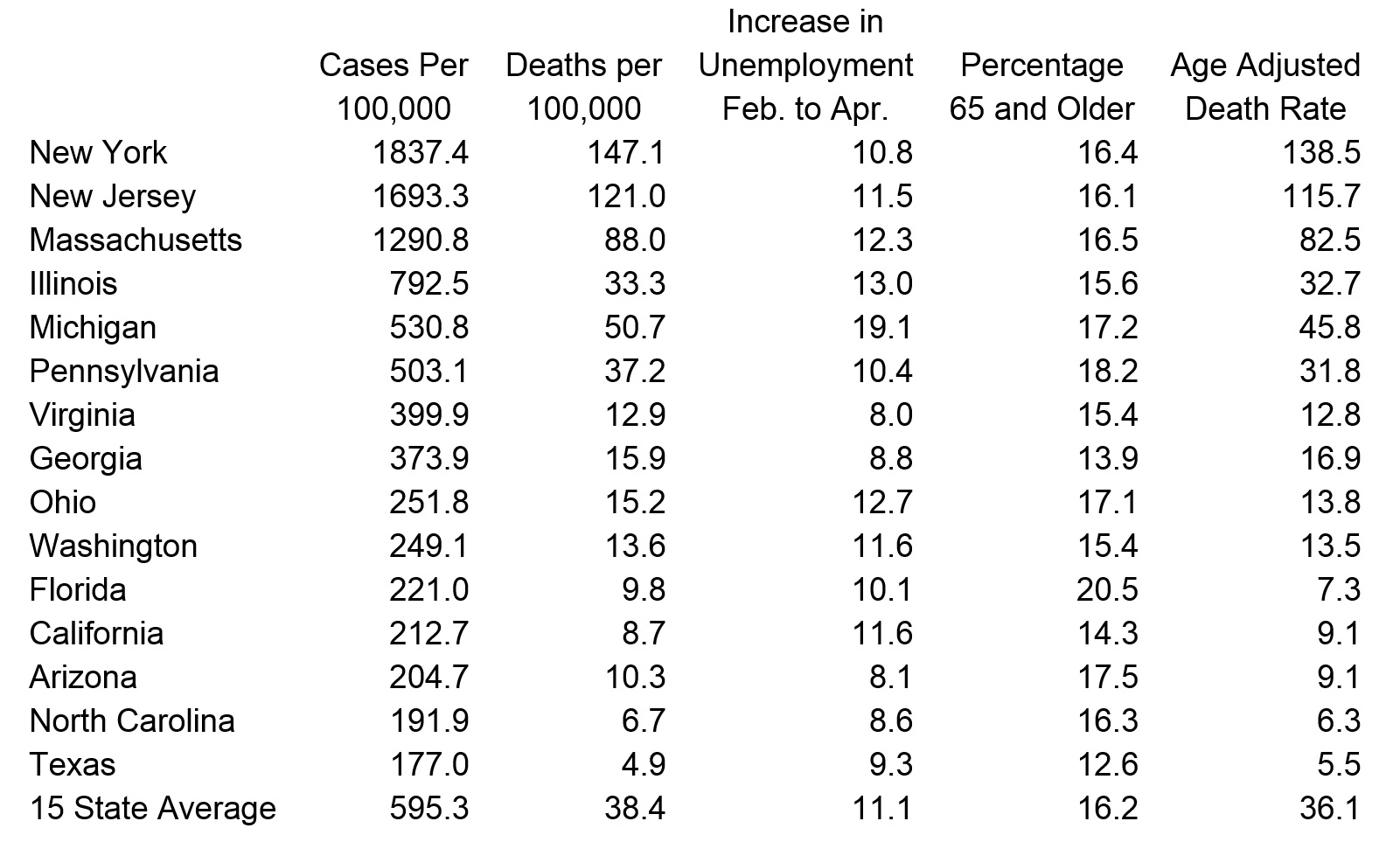There appears to be no statistical connection between the economic pain of the nationwide shutdowns and the number of COVID-19 cases or fatalities. None. Let that sink in for a moment, given we were told we had to lock down America to “flatten the curve” and save lives.
On the other hand, the data does suggest that reliance on mass transit is connected with virus cases and fatalities.
The latest state-level unemployment report was issued May 22 by the U.S. Bureau of Labor Statistics (BLS) for the month of April. The numbers are brutal, with each bit of cold data representing people who have lost their livelihoods, seeing their plans derailed by a virus released by what appears to be sloppy lab procedures in Wuhan, China.
Unlike the weekly drumbeat of unemployment insurance claims the Department of Labor publishes every Thursday morning, this monthly BLS report includes people who have been rehired, and incorporates other methods to more accurately gauge how many people are out of work.
A state’s increase in unemployment from the February report, before the economic damage from the stay-at-home orders took hold, to April, can serve as a proxy for the degree of a state’s effort to lock down residents. What does it show?
Allowing for the fact that some places, such as Hawaii and Nevada, are heavily dependent on tourism while others, such as Connecticut and the District of Columbia, have a large share of white-collar workers who can work from home, the data shows no connection between the increase in unemployment and either COVID-19 case rate, fatality rate, or even age-adjusted fatality rate.
Put another way, there appears to be no statistical connection between improved health outcomes and pandemic policies that forced nearly 40 million people into the unemployment lines. None.
One might expect to see that states that suffered the most in COVID cases or fatalities would also be the states with the highest increases in unemployment as politicians and public health officials in those areas instituted strict measures to slow the disease. Alternatively, states that hadn’t seen much in the way of the virus should be relatively better off economically.
Among the 15 most-populous states, New York has the highest COVID case rate, the highest death rate, and the highest age-adjusted death rate, while its unemployment rate jumped 10.8 percent from February to April.
At the other end of the spectrum, Texas has the lowest case rate, the lowest death rate, and the lowest age-adjusted death rate among the 15 most-populous states. Texas’ unemployment rate increased 9.3 percent over the past two months reported.
Michigan took the biggest economic hit among the large states, with its unemployment rate jumping 19.1 percent from February to April. Yet the medical damage the virus inflicted on the state is close to the 15-state average. This may indicate that the painful economic steps Michigan’s governor took had little benefit—or, at least no provable statistical connection to a benefit.

Looking for any statistical connection among the 50 states and D.C. with regards to virus case rates and age-adjusted death rates yields no link to the increase in unemployment, to average winter temperatures, or to international travelers as a share of the population—although the restrictions President Trump placed on international travel on January 31 likely mitigated this last factor.
A significant factor that does stand out in the virus’ spread, however, is the prevalence of mass transit in a state. Heavier reliance on mass transit is also statistically linked to population density, although urban areas in California and Texas offer an exception. At the state level, 28.0 percent of New Yorkers use mass transit to commute to work and so do 11.7 percent in New Jersey, compared to 4.9 percent in California and 0.6 percent in Texas.
Further, mass transit was declared an essential service. Thus, when New York Gov. Andrew Cuomo ordered nursing homes to accept COVID-19 patients, a policy now widely seen as a fatal error, that decision may have been compounded by the many health-care workers who commuted to those nursing homes on the subway, having caught the virus in the dark, damp, and poorly ventilated environment then becoming asymptomatic carriers.
While additional data will no doubt be discovered and analyzed for ideas as to how to best reduce the public health harm and economic damage from this and future pandemics, there appear to be strong indicators that one major policy initiative of the left could have a fatal result.
For instance, had the Green New Deal and its vision of a virtually carless future with trains, subways, and buses connecting densely packed transit-oriented developments been enacted 20 years ago, how bad might the nation’s virus losses have been so far? Social distancing and subway use are mutually exclusive—low passenger density defeats the purpose of the subway and any other mass transit system.

Given that New York’s age adjusted COVID fatality rate is 25 times higher than Texas’s, we can project that, instead of more than 95,000 deaths attributed to the virus, we might have suffered more than 1 million American dead.
